Daydreaming as I walk the streets of Florence, I’m suddenly jolted from my daze by a man crashing into me.
The church I’d just been looking at is lost from view as I quickly swing around and move into a doorway before about ten more men rush past.
They knock into pedestrians as they crush through the crowds, trying to get away from the Italian police officers chasing after them with shouts of “Oi! Oi!”.
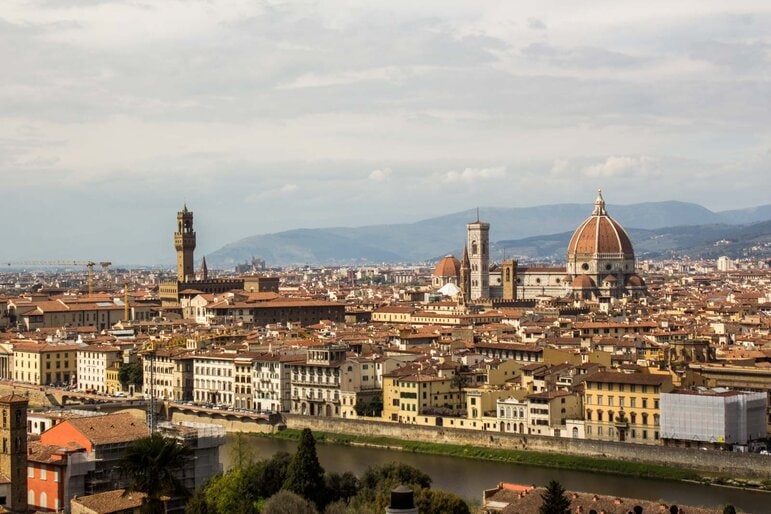
The pursued seem to be treating it a bit like a game, while the pursuers don’t try too hard and eventually stop running. The aim seems to be to disturb them and move them on, rather than actually catch them.
The fleeing men, you see, had been in the streets trying to sell souvenirs, jewellery, and posters to the tourists. Illegal, probably. Annoying, definitely.
What the police are really trying to do is keep Florence’s historic centre pleasant for the crowds of visitors who come here to bask in the centuries of art and architecture captured in an enormous open-air gallery.
Florence: The city of museums
The short chase that plays out in front of me is a rare spark of unexpected action in a city that normally seems quite tranquil.
Don’t get me wrong – Florence is busy and there’s lots going on. But it can often feel like being in a big busy museum, where you’re shuffling along with the crowds looking at the collection around you.
If you’re planning to see a lot of museums here, the Firenze Card is a good way to save lots of money on tickets.
Every block is an exhibit… a part of history captured in a building or a statue. It is a city of heritage (fascinating and beautiful history), so the Historic Centre of Florence reflects that, preserved with all its treasures.
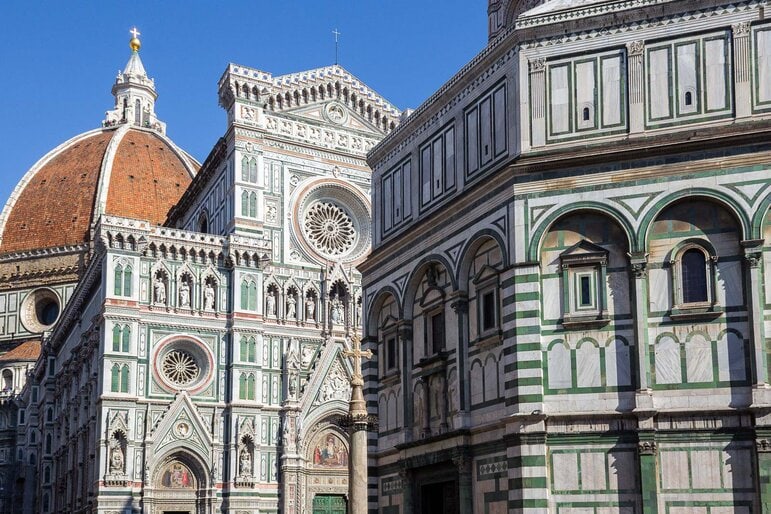
The Duomo stands at the centre of Florence, the prized exhibit from which all other reference points are measured. Seeing it is one of the best things to do in Tuscany.
It took almost 150 years to build and was finished in 1436, a perfect example of the classic gothic style. At one point it was the largest dome in the world.
But when you visit the city, the Duomo and its museum will be just the starting point. There are actually about 70 museums in Florence and you’ll find some of the highlights of the city within them, including some of the finest examples of renaissance art in the world.

Florence’s museums blend in with the churches and buildings of yesteryear, together creating a seemingly never-ending exhibition that you can’t ever truly finish seeing.
Visiting the museums of Florence is to visit everything that makes Florence such a special city.
Tips for visiting the museums in Florence
In a moment, I’ll take you through my list of the best museums in Florence. But first I want to give you a few tips, if you’re planning to visit them.
Skip the line tickets
The most important thing to know is that the most popular museums will normally have long queues to get in (especially during peak tourism months, but they’ll exist at any time of the year).
I’m guessing you didn’t come all the way to Florence to stand in lines for hours, so I would definitely recommend paying a little bit extra to get skip-the-line tickets.
The two busiest museums that you should really do this for are the Uffizi Gallery and the Accademia Gallery. You can book an Uffizi Gallery timed ticket here and you can book an Accademia Gallery timed ticket here.
There are a few other Florence museums that often have long lines (although nothing like those first two). If you’re visiting during a busy time of year, you can book skip-the-line tickets here for: The Medici Chapels, for the Boboli Gardens, for the Pitti Palace, and for the Palazzo Vecchio.
A lot of these museums also offer guided tours (which are every worthwhile) which will give you priority entrance. I’ll mention these when I talk about each site.
Closed days
Another important thing to mention is that many of the main museums close for one day a week.
The two big ones – the Uffizi Gallery and Accademia Gallery – are closed on Monday, for example.
The Medici Chapels are closed on Tuesdays (and some Sundays). The Palazzo Vecchio is closed on Thursday afternoon. And so on.
I’ll mention below when each museum is closed but don’t panic. There are plenty of other museums to visit in Florence, so just plan your trip accordingly.
City cards for Florence
Before we go on, I also want to mention that there are several cards or combination tickets you can get that might save you money if you’re planning to visit a lot of museums in Florence.
- Firenze Card: It costs €85 but gives you fast-track entry to more than 60 museums (including the main ones) over a 72-hour period. If you’re going to do some hardcore sightseeing, the Firenze Card is decent value.
- Florence city passes: You might see some other companies offering Florence city passes. I’m not going to go into the details of them here, though, because I don’t think any of them are good value and worth buying.
- Bargello Museums: Some of the museums themselves have nice combo tickets available. A good one is the Bargello Museums, which has a pass to visit its five sites for just €33 (rather than €40 if you bought tickets for each separately).
- Uffizi combination ticket: Another one, as an example, is this combined ticket for the Uffizi, Pitti Palace, and Boboli Gardens for €38 (instead of €46).
I would definitely recommend considering one of these cards if it fits your plans, because otherwise, the cost of seeing all the top museums in Florence can add up!
The top museums
If you don’t want to spend your whole time in the city visiting museums, you may want to just visit a couple of the best museums in Florence, and then maybe choose a couple of the other ones, based on your particular interests.
So these are the four top Florence museums that you really shouldn’t miss:
Uffizi Gallery
The Uffizi Gallery is one of the world’s best art museums, with an enormous collection of artworks from the Italian Renaissance, and a highlight of visiting Florence.
Along the corridors of the 16th-century palace (which was never intended to be a museum), you’ll walk past iconic pieces by the most famous of artists, presented generally in chronological order.
In the Uffizi Gallery, you’ll find works by Leonardo da Vinci, Michelangelo, Raphael, Caravaggio – plus some international artists like Rembrandt and Dürer. My personal favourite is the Birth of Venus by Sandro Botticelli.

I would highly recommend getting a skip-the-line ticket in advance and reserving a timeslot. Or there are some great tours, which will add to your visit and give you priority entry:
It’s easy to spend the whole day here if you’ve got the time and love art, so leave yourself plenty of time!
The Uffizi Gallery is open Tuesday to Sunday from 8:15 to 18:30. It is closed on Monday.
A standard ticket is €12 and a concession is just €2.
Accademia Gallery
On the other side of the city, and without as grand an entranceway, you’ll find the Accademia Gallery (Galleria dell’Accademia). It’s much smaller and more specialised than the Uffizi Gallery but is almost as popular because of its star attraction – Michelangelo’s David.
The 5.1-metre-high sculpture is astounding and seeing it in person is even better than you might imagine. It’s worth visiting the Accademia Gallery just to see it (which is what quite a few people do).
But there are a lot more to see once you’re here, including some other Michelangelo sculptures, plus works by Botticelli and Giambologna. While many of the artists on display are not household names, they are still among the best Renaissance pieces in the world.
There are some interesting tours that will bring the artworks to life:
And this is another place where there are usually long queues, so I recommend you book this skip-the-line entry in advance.
The Accademia Gallery is open Tuesday to Sunday from 8:15 to 18:50. It is closed on Monday.
A standard ticket is €16 and a concession is €2.
Palazzo Vecchio
One of the most important buildings in Florence, the Palazzo Vecchio is the city’s town hall, with a history that goes all the way back to 1299. It looks a bit like a fortress because that was one of its aims – to protect the rulers of Florence.
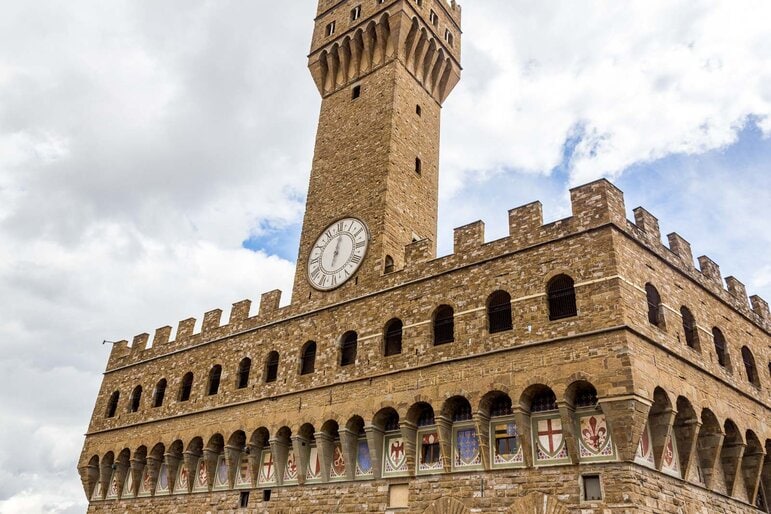
Although the Palazzo Vecchio is still used for the mayor’s office and seat of the City Council, most of it is a museum that you can visit. In the basement, you’ll see the ruins of the Roman theatre it was built over, and on the other levels are the opulent rooms.
There are sumptuous private apartments filled with priceless ornamentation and the enormous Hall of the Five Hundred with panelled ceilings and wall frescoes of battles.
You might be interested in one of these tour options, which will also let you skip the queue:
For a small extra fee, you can climb the tower for amazing views of Florence.
The Palazzo Vecchio is open daily from 9:00 to 19:00, and 9:00 – 14:00 on Thursdays.
A standard ticket is €12.50 and a concession is €10.
Opera del Duomo Museum
If the Palazzo Vecchio is the most important building of the state, the Duomo (Cathedral) is, of course, the most important building of the church. As well as going inside the cathedral itself, you also shouldn’t miss its museum, called the Opera del Duomo Museum (the ‘opera’ isn’t the musical type – it’s the name of the original construction committee).
The original idea of the Opera del Duomo Museum was to house artworks that needed to be taken out of the Duomo and the Baptistery of San Giovanni. Over the years, this collection grew and it now has some exceptional pieces, including the baptistery’s main 18th-century altar.
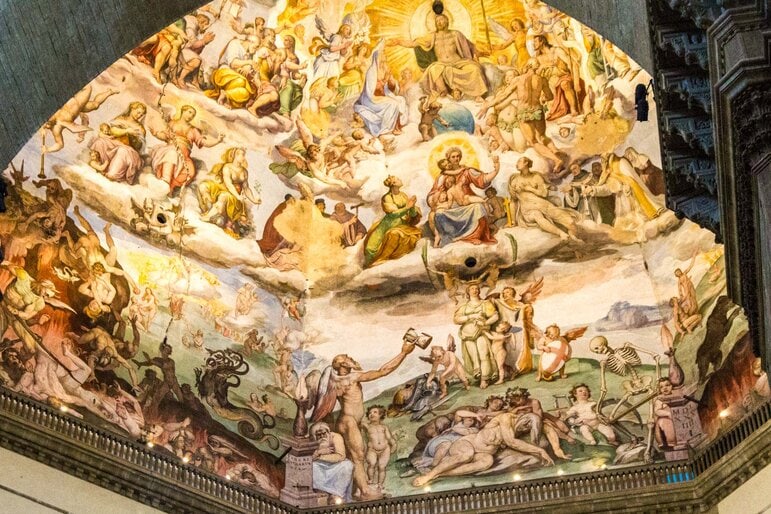
In 2015, the museum was renovated and now presents more than 750 works over three floors, including a bright atrium with a reconstruction of an old Duomo facade.
These tours will give you a fascinating insight into this icon of Florence, and let you skip the queue:
The museum is included with different combo tickets for the Duomo itself.
The Opera del Duomo Museum is open daily from 8:30 to 19:00. It is closed on the first Tuesday of each month.
There are three types of combination tickets that include other parts of the cathedral with the museum, with the cheapest option €15 for a standard ticket (€5 concession) and the most expensive €30 for a standard ticket (€12 concession).
Art galleries
Obviously, I’ve already mentioned the two most important art galleries, but there are plenty more art museums in Florence to visit. Here are a few of the best ones:
Bargello Museum
The Bargello Museum was formed by royal decree in 1865, making it Italy’s first national museum. Within the walls of a historic palace, are some of the most important artworks of Italy’s Renaissance – plus unrelated collections such as Islamic art that have been added over the years.
The two most significant areas in the Bargello Museum are the Michelangelo Room, which has sculptures from Michelangelo and some of his contemporaries, and the Donatello Room, which has Donatello’s most famous works. Interestingly, you can see his version of David, which is very different to the more famous sculpture.
If you want to book entry in advance to guarantee you can skip any queue, you can get a reserved entry ticket here. And if you want to get the most from your visit, there’s this good tour of the Bargello Museum.
The Bargello Museum is open at the following times:
Monday, Wednesday, Thursday, Friday, Sunday: 8:15 – 13:50
Saturday: 8:15 – 18:50
It is closed on Tuesday, the 2nd/4th Sundays of the month, and 25 December.
A standard ticket is €10 and a concession is €2.
Museo Novecento
The Museo Novecento is dedicated to 20th-century art – something you don’t find a lot of in such a historical city as Florence. The focus is on Italian artists, but not exclusively.
It’s interesting to see the juxtaposition at the Museum Novecento between the modern artworks full of colour and the building that holds them – a 13th-century pilgrim shelter.
Although it may not have the famous pieces of the Renaissance galleries, there are also exhibitions about fashion and theatre and it’s a very interesting museum.
The Museo Novecento is open Monday to Sunday from 11:00 – 20:00 and closed on Thursdays.
A standard ticket is €9.50 and a concession is €4.50.
Palazzo Strozzi
Speaking of modern art, sometimes you’ll find the most cutting-edge exhibitions at the Palazzo Strozzi. I say ‘sometimes’ because the museum hosts several different exhibitions each year, sometimes with contemporary artists like Jeff Koons or Ai Weiwei, sometimes with classics like Leonardo da Vinci or Ancient Greek sculptures.
The museum is housed in one of the most magnificent palaces in Florence, built by the Strozzi family in the 16th century to intentionally try to rival anything the Medici family had. It’s worth seeing just for the building, but the innovative shows make a visit even more worthwhile.
The Palazzo Strozzi is open daily from 10:00 to 20:00, except Thursday when it’s open late until 23:00.
A standard ticket is €15 and a concession is €12.
Private collections
Many of the museums in Florence have collections that have come together over the years from public campaigns and other sources. But there are a few sites that are particularly interesting because the items were all collected by one person.
Stibbert Museum
Federico Stibbert lived between 1838 and 1908, born to an English father and an Italian mother. He inherited wealth but also made a lot of money from business dealings.
He used his fortune to collect antiques from across Europe and, for about 50 years, bought items and put them on display in his house in Florence, which has now become the Stibbert Museum.
It’s an astounding collection of about 50,000 items with a focus on armoury from Europe, Japan, and the Islamic World, as well as paintings ceramics and costumes.
The Stibbert Museum is open at the following times:
Monday – Wednesday: 10:00 to 14:00.
Friday – Sunday: 10:00 – 18:00.
It is closed on Thursday, as well as 1 January, Easter Sunday, 1 May, 15 August, 25 December.
A standard ticket is €10 and a concession is €7.
Bardini Museum
Living between 1854 and 1922, Stefano Bardini was possibly the most important antique expert of his time and used his antique business to collect many items for himself. This collection has become the Bardini Museum.
It’s all on display in his house, which was once a church and convent that he renovated himself. You’ll find artworks, ancient artefacts, and pieces of historic Florence that he collected to preserve from destruction.
The Bardini Museum is open Friday to Monday from 11:00 to 17:00. It is closed on Tuesday, Wednesday, and Thursday.
A standard ticket is €7 and a concession is €5.50.
Horne Museum
English architect Herbert P Horne moved to Florence at the end of the 19th century to study the Italian Renaissance and took a special interest in art, furniture, and household objects. He didn’t just want to collect them, he wanted to use them to create a home that represented his taste.
While not nearly as large as some of the palaces that have become museums, it’s still an impressive house full of priceless artworks and other items that are representative of the city from the 13th to 17th centuries.
The Horne Museum is open Monday to Sunday from 10:00 to 14:00. It is closed on Wednesday and public holidays.
A standard ticket is €7 and a concession is €5.
Important sites
Some of Florence’s museums are not a collection of items that have been brought into a building for display, but the buildings themselves. These important sites had the artworks and treasures here already, but are now protected as museums for you to visit.
Medici Chapels
Within the Church of San Lorenzo are the tombs of the wealthy and powerful Medici family, which include the opulent chapels you would expect from the people who financed much of the great art in Florence.
The museum of the Medici Chapels includes the New Sacristy and its sculptures designed by Michelangelo; the Chapel of the Princes, which is an epic mausoleum with stunning decorations of marble and gems; and the Crypt itself which houses the tombs.
There are these tour options to learn all about the beautiful site:
Otherwise, it’s a popular attraction, so to guarantee you can skip any line, you can reserve an entry ticket here.
The Medici Chapels is open Wednesday to Monday from 8:15 to 18:50. It is closed on Tuesday and December 25.
A standard ticket is €9 and a concession is €2.
Palazzo Medici Riccardi
Originally built in the mid-15th century as a main residence of the Medici family, this enormous palace was later sold to the Riccardi family in 1659 who added much of the magnificent artwork you’ll find inside. It was then used as the seat of Florence’s city government.
The museum at the Palazzo Medici Riccardi is spread over three floors and, while some rooms have collections on display (such as ancient marbles), mostly what you see is the authentic interior design of the palace, which gives an insight into how the most wealthy decorated their homes.
The Palazzo Medici Riccardi is open Thursday to Tuesday from 9:00 to 19:00. It is closed on Wednesday and December 25.
A standard ticket is €10 and a concession is €7.
Casa Martelli
Casa Martelli also offers a look into how the noble families of Florence lived, but this time the decorations are from a later period, collected by the residents from around the 18th century.
The grand house was renovated in 1738 and is decorated with works from artists like Piero di Cosimo and Beccafumi, as well as antique furniture and tapestries. Casa Martelli didn’t need to be reconstructed to be a museum – it’s displaying this fascinating collection pretty much as it was.
The Casa Martelli is open at the following times:
Saturday: 9:00 – 13:00.
Tuesday: 13:30 – 18:30.
It is closed for the rest of the week.
The museum has free admission.
Palazzo Davanzati
And the Palazzo Davanzati is an example of an older palace, originally constructed in the mid-1300s as an amalgamation of several medieval tower houses.
While you can see the original layout and design – with a drawing room, study, and bedrooms – there’s also a museum within the house with items from collections across Florence, including sculptures, paintings, furniture, and lace.
The Palazzo Davanzati is open at the following times:
Tuesday to Thursday: 8:15 – 13:50.
Friday to Sunday: 13:15 – 18:50.
It is closed on Monday, 1st/3rd/5th Sunday of the month, and December 25.
A standard ticket is €6 and a concession is €2.
Museo Degli Innocenti
For something a little different, you might be interested in the Museo Degli Innocenti, housed within the Istituto degli Innocenti (Institute of the Innocents). The institute was founded in the 15th century to look after abandoned children.
The institute is still operational, although it’s more about helping families than taking in orphans or abandoned children. Part of the museum tells the story of its work and is actually suitable for young visitors (fittingly).
However, the main focus of the museum is the art that has been collected over the centuries as donations or commissions, including works by Ghirlandaio, Botticelli, and Di Cosimo.
The Museo Degli Innocenti is open daily from 9:30 to 19:00.
A standard ticket is €9 and a concession is €6.
Famous people
Throughout the history of Florence, some of Europe’s most significant characters called the city home. There are several museums in Florence dedicated to the lives and works of these people.
Leonardo da Vinci Interactive Museum
Of all the people from Italy’s Renaissance, Leonardo da Vinci is probably the most important, a genius ahead of his time who excelled in art, architecture, science, and even theatre. And he kept copious notes, as well as published many works, that give us a wealth of knowledge about the man.
The Leonardo da Vinci Interactive Museum tells his story mainly through his inventions (although there are also a few of his original documents and reproductions of his artworks). About 50 of his inventions have been built based on his designs and you can try them for yourself.
The museum is definitely suitable for children, although it’s more than a kid’s museum. Everyone will appreciate learning more about da Vinci’s genius.
You can buy a skip-the-line ticket here in advance if you’re visiting during a busy period.
The Leonardo da Vinci Interactive Museum is open Monday to Friday from 10:00 to 19:00, Saturday from 9:30 – 19:30, and Sunday from 9:30 – 19:00.
A standard ticket is €7.90 and a concession is €6.90.
Galileo Museum
The legacy of Galileo Galilei can’t be understood. He changed the way the world thought about astronomy and physics, even in the face of opposition from the Catholic Church.
Galileo had the powerful Medici family as his patrons, which helped him as he invented scientific instruments and discovered more about the universe. Many of these inventions and the stories of his work are presented at the fascinating Galileo Museum.
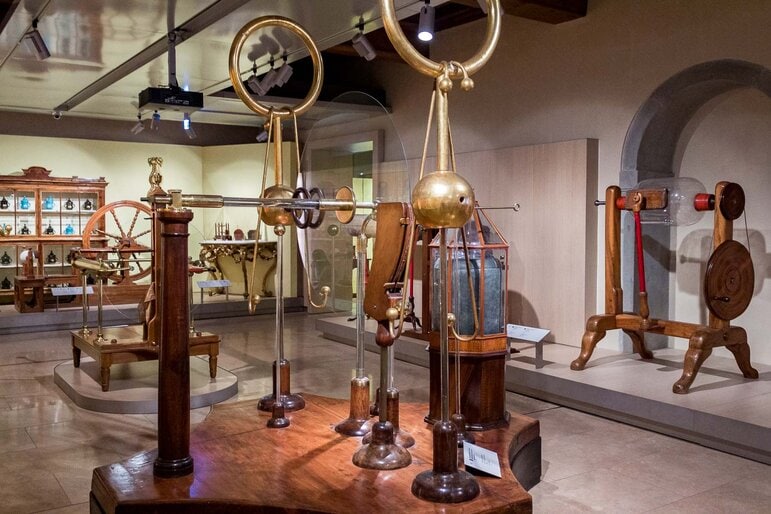
But also on display are other instruments and artefacts collected by the Medicis, who had a strong interest in many scientific disciplines. It’s an interesting journey through the science of the time… and beyond.
If you are particularly interested in science and history, there is this excellent small group tour of the museum.
The Galileo Museum is open daily from 9:30 to 18:00, except Tuesday when it closes at 13:00.
It is closed on 1 January and 25 December.
A standard ticket is €13 and a concession is €7.
Dante’s House
The museum known as Dante’s House is on the site where it’s believed the great Italian writer, Dante Alighieri was born in the 13th century. But it’s more than just a tribute to him.
The museum tells the story of Florence in the Middle Ages through a typical house of the time and the social and political powers at play. There’s a reproduction of a bedroom of the time, and then there are lots of items directly related to Dante, including his works and works about him.

Interestingly, Dante’s House is set over three levels to represent the three parts of his Divine Comedy work.
Dante’s House is open at the following times:
November to March: Tuesday to Friday from 10:00 – 17:00, Saturday and Sunday from 10:00 – 18:00. Closed Monday.
April to October: Daily from 10:00 – 18:00.
It is closed on 24/25 December.
A standard ticket is €8 and a concession is €5.
Gucci Museum
Fast forwarding through history, we reach the 20th century with the Gucci Garden, a museum (and store and restaurant) inside the historic Palazzo della Mercanzia.
The famous fashion brand was founded in Florence in 1921 and the museum takes you through the development of the style and products that are now known around the world.
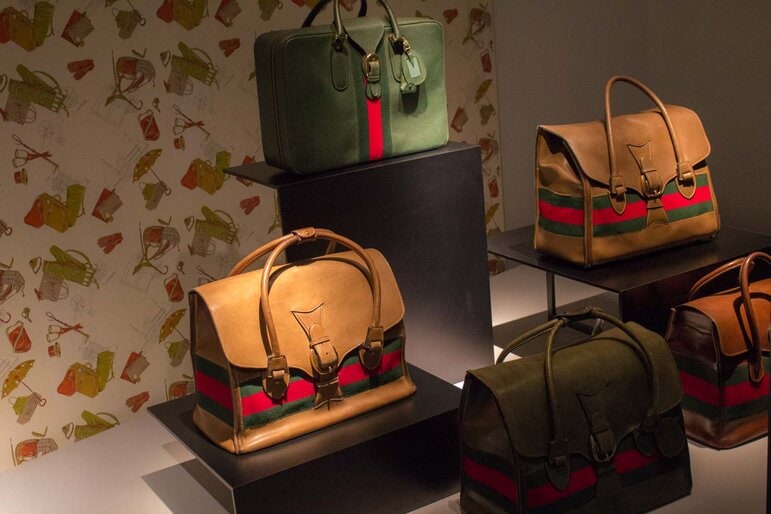
The museum is very stylish and creates the sense you would expect from the brand. It’s not just an interesting story, it’s a piece of modern art that deserves to be in this city amongst the others.
The Gucci Museum is open daily from 10:00 – 19:00.
A standard ticket is €8 and a concession is free.
Salvatore Ferragamo Museum
Another museum in the same vein is the Salvatore Ferragamo Museum, dedicated to the life of the Italian shoe designer. There are about 10,000 models of shoes that he created or owned until his death in 1960.
There’s also lots here about his life and work, including video clips, advertisements, clothes, and accessories. It’s all beautifully presented, in a way that is fitting for a brand that is still considered the height of elegance.
The Salvatore Ferragamo Museum is open daily from 10:30 – 19:30.
It is closed on 1 January, 15 August, and 25 December.
A standard ticket is €8 and a concession is €5.
Pitti Palace
Finally, I’m giving the Pitti Palace its own section because this enormous complex is actually home to five museums… Plus a couple of extra ones in the Boboli Gardens.
The Pitti Palace is a vast building built in the 15th century and then bought by the Medici family and later lived in by other dynasties, including the Kings of Italy from the House of Savoy.
Its collections are divided into different museums, each offering something different.
There’s lots to discover, as you’ll see with my following list of museums in the Pitti Palace, so you might want to take a tour so you don’t miss the best bits:
There isn’t always a queue, but you can get this skip-the-line ticket in advance if you’re visiting Florence during a busy period.
The Pitti Palace is open Tuesday to Sunday from 8:15 – 18:30.
It is closed on Monday, 1 January, and 25 December.
A standard ticket is €10 and a concession is €3.
Imperial and Royal Apartments
Walking through the apartments takes you on a journey of the wealthy and powerful who have occupied this palace over the centuries, and the lavish decorations and interior design.
The museum consists of 14 ceremonial rooms on the first floor and has original items from different eras, including silk tapestries, mirrors, and furniture.
Palatine Gallery
The rest of the first floor of the palace is used for the Palatine Gallery, which has artworks that belonged to residents of the palace – and, considering who they were, you can just imagine the quality.
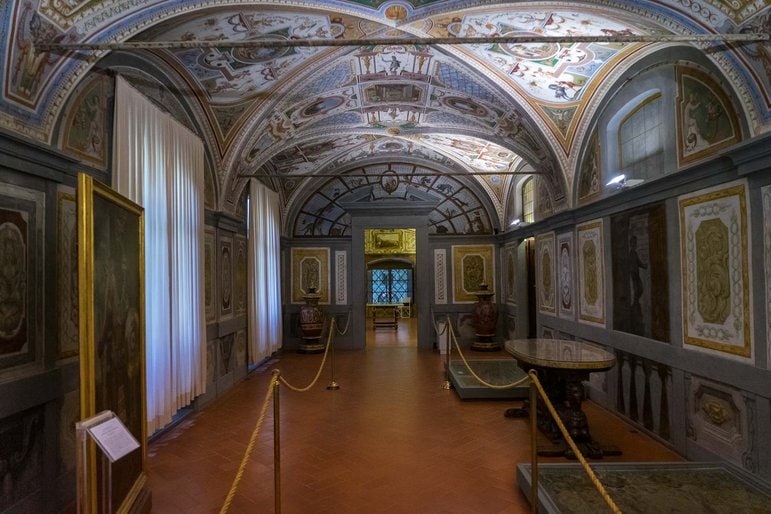
There’s the world’s largest concentration of paintings by Raphael, plus works by people like Caravaggio and Rubens. Even the frescoes on the ceilings of the rooms are works of art in their own right.
Gallery of Modern Art
The artworks here range from the end of the 18th century to the 1930s but, although they are technically modern art pieces, don’t expect anything too adventurous. It’s an excellent collection but one that’s appropriate for a building with this history.
Treasury of the Grand Dukes
These rooms were once the summer apartments of the Medici family and the walls are covered in frescoes. But the focus of the collection here are treasures like silverware, vases, and crystals.
There’s also an important collection of jewellery from the 17th century to the 20th century.
Museum of Costume and Fashion
I think the Museum of Costume and Fashion is one of the most interesting of them all, with the items on display giving you a direct look at the way fashion has changed in Florence (and Italy more generally) over the past few centuries.
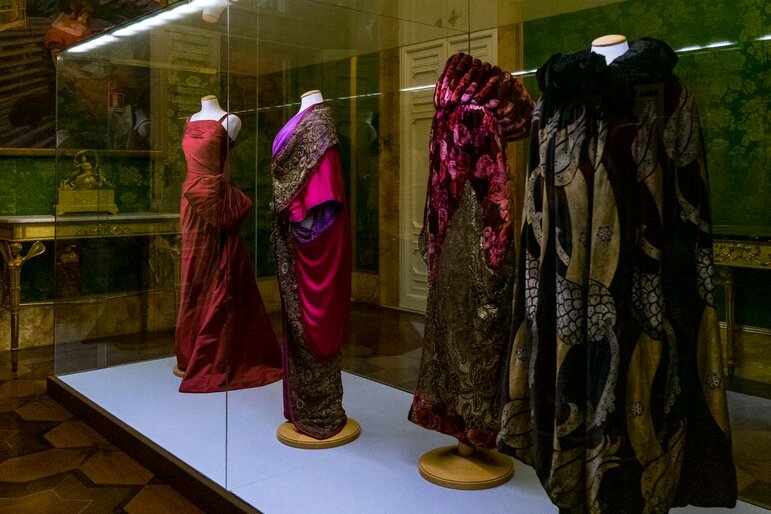
There are the luxuriant gowns worn by the nobility themselves, but there are also costumes from movie theatre, and opera that they’ve collected.
Visiting Florence’s museums
So, as you can see, there is more to see in Florence than I think you could ever fit into one trip. But you don’t need to visit all the museums in Florence. What they offer is a variety of options so you can tailor your visit to your interests.
As a reminder, if you want to visit the top museums, you should get a skip-the-line ticket with a reserved time, or book a tour that includes entry.
You can book an Uffizi Gallery timed ticket here and you can book an Accademia Gallery timed ticket here.
Booking priority-entrance tickets for other museums is probably only necessary in busy tourist periods, but here’s where you can do that for: The Medici Chapels, for the Boboli Gardens, for the Pitti Palace, and for the Palazzo Vecchio.
And I’ve mentioned quite a few tours of museums throughout this article. I really would recommend joining a tour in at least one of the big museums, because there’s so much to learn that you can’t get from just walking through yourself – and appreciating the beauty and history infused throughout Florence is the biggest joy of being here.
THE BEST ACCOMMODATION IN FLORENCE
There’s lots of accommodation in the historic centre so I would recommend finding somewhere there so you’re amongst all the sights.
BACKPACKER

For a cool hostel, I would recommend the modern Plus Florence, which even has a pool.
BUDGET

With comfortable and affordable rooms, Hotel Lorena also has a fantastic location.
BOUTIQUE

For a bit of style, I love the vintage design of the Residenza La Musa Amarcord.
LUXURY
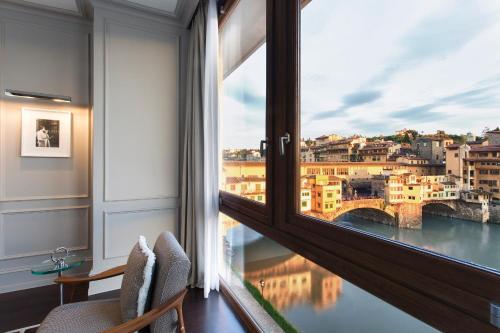
And it’s not cheap, but Portrait Firenze is my recommendation for the best luxury hotel in the city.





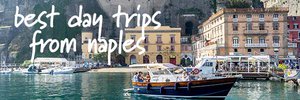
I get what you mean about that. Everyone always raves about Florence, but when I look back on my short stop in Florence, all I remember is seeing a few famous buildings, nothing more.
To be fair, those famous buildings are lovely, but it was hard to find any real life there. I still loved the place, though, and would definitely go back again soon!
I come from Florence and I used to travel a lot around the world for fun and work. In all my trips I never found a city like that! I am not talking only about good food and beautiful buildings (they are not a few, believe me!) but it is the constant feeling to touch the history in the daily life. At the moment I am living abroad and here are what I miss mostly: colors and art&history around me. Next time you will go there, drop me a line and I will suggest to you many must-see places (apart the most famous one) and not touristic spots. 🙂
Oh, I would love to get some advice for my next trip. The history and the old buildings are amazing and I loved my time there. But it would be great to see a bit more of the current ‘real’ city as well!
When I saw Florence many years ago, I thought it looked like a movie set. Gorgeous, but it doesn’t look real!
I’m surprised they don’t film more movies there!
Florence is such a lively city, my cousin lived there for three years during uni and loved it. Maybe you stayed too little to fully enjoy it, next time devote a bit more time. I hope I’ll be able to go myself soon, I’ve been promising myself a treat in Florence and haven’t had the chance yet!
OK, a fair point that I’ll take on board. I guess it’s often hard as a tourist to find where the locals are hanging out. But the thing I felt about Florence is that most of the city is historic and touristy and there just didn’t seem to be too many ‘current’ places wherever I looked.
I heard Florence was the most artistic city of Italy. For some reason Italy doesn’t appeal to me all that much, but I would be willing to go just to see what the art in Florence is all about!
You would love Florence. Such an amazing place. And if you are into art, then you would have trouble finding a better place!
One of the best places in Italy! Florence has a beautiful tourist spots where you can enjoy fully with your vacation. I would love to be here every year!
A trip every year sounds like a great idea! Hopefully you can find a time to avoid all the tourists. There are so many of them everywhere!!
The Duomo is one of the most amazing things I’ve ever seen
Such an amazing building! And it’s just as cool to enjoy it from the inside as the outside, which I love!
Ugh — I’ve got to stop looking at all these pictures of Italy! I want to go there so badly! Great pictures, Michael!
Just go!!! 🙂 I never realised how beautiful it is here. Everything is just like a postcard!!
Wow, it seems that Florence is a very nice place to take a vacation to. I love your pictures, they’re all so nice. Thanks for sharing!
Thanks Byron. I hope you get a chance to go there sometime. Let me know if you need any tips.
This is my most desired city to travel too!
Well I hope you get there sometime soon!
Italy is one of the beautiful places all over the world and it is truly nice. I love to go there and hopefully this coming summer! 🙂
I hope you manage to get there this summer. The only problem is there is too much to do! Choose wisely if you’ve only got a limited time and don’t overstretch yourself.
Interesting point about Florence being like a giant museum and consequently seeming lifeless – it *does* feel that way! Rome, on the other hand, felt bustling and full of life despite having ruins, churches, museums and attractions on every street corner. It somehow just felt more alive.
I wonder why there’s such a difference. Obviously Rome is a much bigger city (and a capital) but it’s almost like Florence made a decision to not be so lively…
I respect the Italian policemen and Officials also.If I had to choose one most favourite European city, I think Florence would be it / I found it so charming and small enough to be able to take it in at a lovely place.
Thanks for the tips on visiting the museums in Florence on a budget! Your advice on buying the combined ticket really helped me save a lot. I was able to visit all the museums on my list without breaking the bank. The Uffizi Gallery was definitely my favorite. Can’t wait to come back and explore more of this beautiful city!
Loved this roundup of Florence’s museums! The tips on saving money are super helpful, especially the advice about free entry days. Can’t wait to use these suggestions for my trip next year!
What a fantastic guide! I can’t wait to explore the museums in Florence next year. Thanks for the tips on saving money—those city passes sound like a great deal! Any recommendations for lesser-known museums that might not be on everyone’s radar?